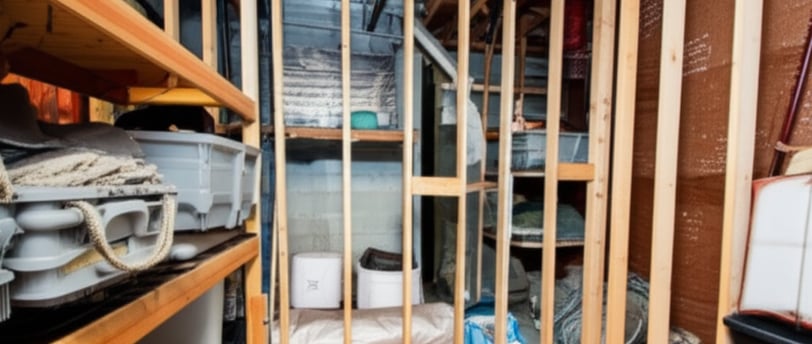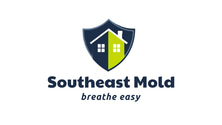Mold in My Unfinished Basement
Unfinished basements in the Southeast, while often used for storage, laundry, or as a workshop, are particularly susceptible to moisture problems and subsequent mold growth.
Southeast Mold
5/26/2025


Unfinished Basement Blues: Battling Mold & Moisture in Your Southeast Home
Unfinished basements in the Southeast, while often used for storage, laundry, or as a workshop, are particularly susceptible to moisture problems and subsequent mold growth. The combination of concrete foundations, contact with the ground, and often limited airflow creates an environment where mold spores thrive. At Southeast Mold, we frequently help homeowners in Georgia and Tennessee tackle these basement woes, ensuring a healthier and more usable space.
Why Unfinished Basements in the Southeast Are Mold Hotspots
Several factors contribute to the high risk of mold in our region's unfinished basements:
Concrete Foundation Permeability: Concrete is porous and can wick moisture from the surrounding soil into the basement.
Groundwater Seepage: Especially during periods of heavy rain, groundwater can seep through cracks in the foundation walls or the slab floor.
High Humidity Levels: The naturally high humidity in the Southeast readily enters unfinished basements, especially if they aren't properly sealed or conditioned.
Temperature Fluctuations: Temperature differences between the warmer outside air and the cooler basement can lead to condensation on walls and pipes, providing another source of moisture.
Limited Airflow: Unfinished basements often lack adequate ventilation, trapping moisture and allowing mold spores to settle and grow undisturbed.
Stored Items: Cardboard boxes, fabrics, and other organic materials stored in damp basements provide a food source for mold.
The Importance of Temperature and Humidity Control
Controlling both temperature and humidity is crucial in preventing mold growth in unfinished basements:
Temperature: While it's not always practical to fully climate-control an unfinished basement like living areas, maintaining a temperature below 76°F (27°C) can help inhibit mold growth. Mold thrives in warmer temperatures. Focus on improving airflow to help regulate the temperature.
Humidity: This is the primary factor in mold prevention. Aim to keep the relative humidity in your unfinished basement below 50%, and ideally between 30% and 45%. This range makes it difficult for mold spores to find the moisture they need to germinate and grow.
The Power of Dehumidifiers in Southeast Basements
A dehumidifier is your best friend in the fight against basement mold in the humid Southeast. Here's why:
Moisture Removal: Dehumidifiers actively draw moisture from the air, lowering the relative humidity in the space.
Inhibiting Mold Growth: By keeping humidity levels down, you deprive mold of the water it needs to survive.
Protecting Stored Items: Lower humidity helps prevent damage to stored belongings, reducing the risk of them becoming moldy.
Improving Air Quality: Reducing mold growth contributes to better overall air quality in your home, as fewer spores will circulate.
Choosing and Using a Dehumidifier:
Select the Proper Size: Select a dehumidifier with a capacity appropriate for the size and dampness of your basement. Consider the pint capacity (the amount of water it can remove in 24 hours). For particularly damp basements, a higher capacity is needed.
Drainage Options: Look for a dehumidifier with a continuous drainage option, allowing you to connect a hose that directs water to a floor drain or sump pump, eliminating the need to manually empty the collection bucket.
Placement: Position the dehumidifier in a central location with good airflow.
Regular Maintenance: Clean the dehumidifier's coils and empty the collection bucket (if not using continuous drainage) regularly to ensure optimal performance and prevent mold growth within the unit itself.
Monitor Humidity: Use a hygrometer (humidity meter) to keep track of the humidity levels in your basement and adjust the dehumidifier settings as needed.
Additional Tips for a Mold-Resistant Unfinished Basement:
Improve Ventilation: Consider installing exhaust fans or ensuring existing vents are clear and functional to promote airflow. However, in very humid climates, be cautious about bringing in too much warm, moist outside air.
Seal Cracks and Openings: Seal any cracks in the foundation walls and floor with a concrete sealant. Ensure proper sealing around pipes and wiring penetrations.
Improve Drainage Around Your Foundation: Ensure proper grading slopes away from your house to divert rainwater away from the foundation. Clean gutters and downspouts regularly.
Elevate Stored Items: Store belongings on shelves or in plastic bins instead of directly on the concrete floor to minimize moisture contact.
Consider Vapor Barriers: In some cases, installing a vapor barrier on the walls and floor can help prevent moisture migration.
Southeast Mold: Your Partner in Basement Mold Prevention & Removal
Don't let mold and moisture take over your unfinished basement. At Southeast Mold, we offer comprehensive basement services for homeowners throughout Georgia, Florida, and the Carolinas, including:
Thorough Basement Inspections: Identifying moisture sources, assessing mold growth, and evaluating ventilation.
Professional Mold Remediation: Safely and effectively removing mold from all surfaces in your basement.
Dehumidifier Installation: Recommending and installing the right dehumidification system for your specific needs.
Crawl Space Encapsulation (Can Extend to Basement Walls): Creating a sealed and conditioned environment.
Waterproofing Solutions: Addressing foundation leaks and improving drainage.
Take control of your unfinished basement environment. Contact Southeast Mold today for an inspection and learn how we can help you create a drier, and more usable space.
Reclaim Your Basement from Mold & Moisture! Contact Southeast Mold Today!
Call Us at: 770-744-3383, or Email Us at info@southeastmold.com
